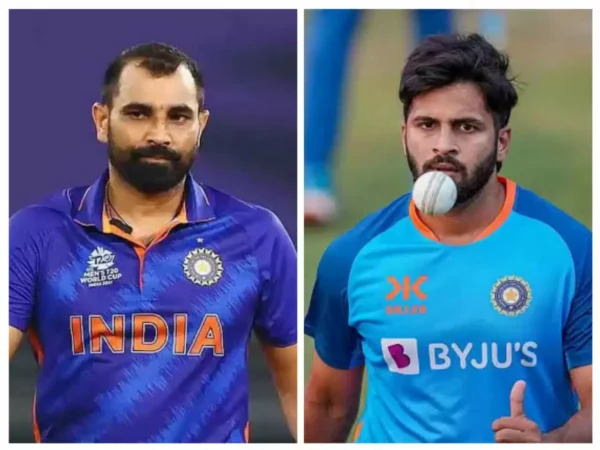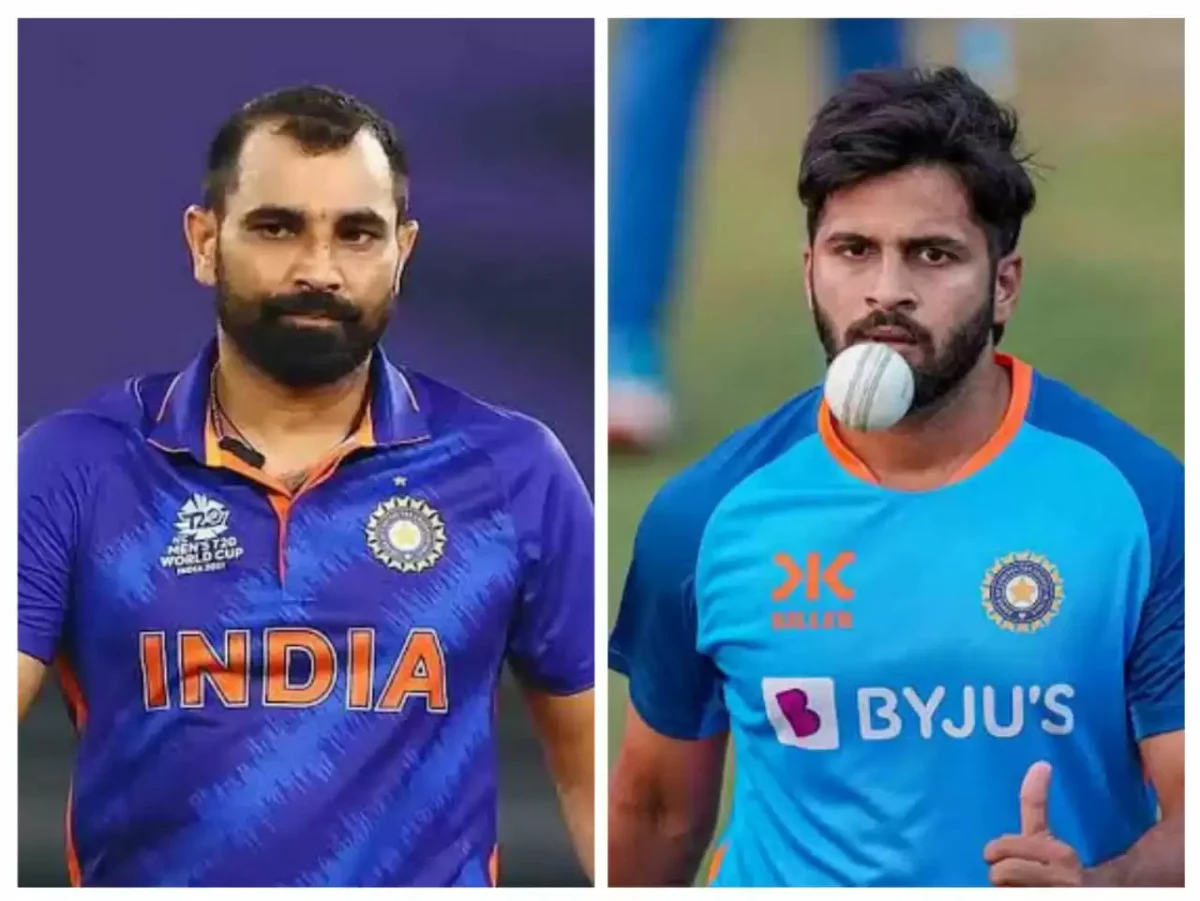
Shami can do everything Shardul does with more control and precision.

Two terms are popular in cricket currently – batting depth and intent. In a way, both are related to each other as well. After India’s game against Pakistan, the batting depth is the talking point, and let’s focus on that for now.
In their opening match of the Asia Cup, India opted for batting depth by playing Shardul Thakur over Mohammed Shami. In the current team, Ravindra Jadeja bats at No. 7, but the team management still wants more batters. For some reason, they lack trust in the first seven batters, capable enough with the willow.
Since 2020, Ravindra Jadeja, India’s No. 7, has 386 runs at an average of 42.88 and a strike rate of 77.66 in 19 ODI innings. Definitely good enough for a No. 7? While Shardul Thakur is a decent batter, he is more likely not to get a chance to make an impact with the bat. Since 2020, Shardul has faced around 13.23 balls per innings on average, which proves this point further.
India’s top order is quite strong, probably the best at the moment in the ODIs. Let not anyone tell you otherwise. Since 2019, India’s top three have faced 52.58% of deliveries and have the second-best average (46.96) in the ODIs. The batters from No. 8 to 11 have played only 7.33% of the deliveries – joint second-lowest with Pakistan among the World Cup teams.
So, the big guns do a majority of the job themselves in most of the matches. The middle and lower middle order does the remaining work with the bat under normal circumstances. It’s not that Shardul is a proven pace-hitter in the lower order, either. He has taken around 5.90 deliveries to hit a boundary against the speedsters since 2020.
Now, there can be a rationale behind playing Shardul that he has been a consistent wicket-taker in this format. Since 2020, Shardul Thakur has picked up the most wickets (50) for India in the ODIs. However, the numbers can be deceiving if not looked at properly, and that is exactly the case with Shardul. He has played the most number of innings (31) and bowled the second-most number of overs (220.3) for the Men in Blue in this phase, so the wickets will automatically be more than others. His economy rate reads 6.13 – the worst among all the bowlers, with a minimum of 10 innings.
Now, this is the thing with Shardul and his bowling. While he has that wicket-taking knack, Shardul lacks control. He bowls too many loose balls in every over, and the teams with quality batters will take him as a weak link.
There is nothing that Mohammed Shami can’t do with the ball that Shardul can. A phase-wise look at the numbers of both players will give a clear picture.
Since 2019, Mohammed Shami has had 17 wickets at an average of 39.11 and an economy rate of 4.71 in the powerplay. Meanwhile, Shardul Thakur has 4 wickets at a horrible average of 76.75 and an economy rate of 6.26. Even without having a look at the numbers, one can clearly tell the difference in the quality of Shami and Shardul with the new ball.
Mohammed Shami is among the best new-ball bowlers, and his recent improvement only strengthens his case further. He was unplayable in the powerplay this IPL. There is no comparison at all.
If Shami plays, India can use Jasprit Bumrah more in the middle overs, where Bumrah can be a game-changer. Skillwise, Bumrah and Shami are almost identical with the new ball.
Now, middle overs are a crucial phase in ODI cricket. The games are made or broken in this phase. Shardul has also done reasonably well in this part of the innings, but he is again behind Shami statistically.
Mohammed Shami snares a wicket at 20.51 runs apiece, while Shardul concedes 22.05 before picking one since 2019. The economy rates are almost similar here. But the thing is, Shami has got more pace, and his heavy balls are more effective than Shardul – something required in the middle overs.
Shardul has those deceiving slower balls, but on a deck like yesterday, where hitting the length was important, Shami’s value increases significantly. The tracks in the World Cup are likely to assist Shami more than Shardul.
In the slog overs, Shami has an economy rate of 8.32 and concedes a boundary every 5.91 balls. Shardul leaks at 9.19 and gives a boundary every 5.31 delivery. Shami’s recent improvement as a death-overs bowler makes him a better prospect overall.
Shami has got more control on his yorkers lately, and his pace again makes him a better hit-the-deck bowler than Shardul. All in all, Shami can do everything Shardul does with more control and precision.
Now, look at it this way – Shardul Thakur, whenever he plays, is the weakest link in both batting and bowling department. Yes, he is a fighter and does unbelievable things on the field at times, but is still far from good in any aspect of the ODIs.
With Mohammed Shami, the bowling department strengthens so significantly that the seven batters will be able to do the rest of the job on most days. There will be days when the batting unit will fail, but the exceptions are always there. However, the bowling unit with Mohammed Shami in it will click more regularly.
The collapses in the big matches of the major tournaments in the past have instilled this idea of having an extra batter, even if it comes at the expense of a lack of bowling depth. That might work in the T20s, but relying on specialists is still a wise option in the ODIs.
Jasprit Bumrah has improved significantly as a batter in the last couple of years, and he gave a glimpse of the same against the quality bowlers of Pakistan in the previous game. Bumrah’s improved batting returns should further lead the team not to cut the bowling unit short. Kuldeep, Bumrah and Shami together form a decent lower order without compromising the bowling quality.
Anyways, if seven quality batters can’t do anything, there is very little an eighth batter – who has yet to prove himself in 50-over cricket – can do in extreme situations. Shardul’s presence won’t let a quality bowler like Mohammed Shami exploit the conditions either. It would be unfair to leave out an in-form Shami just for the sake of batting depth.
For more updates, follow CricXtasy on Facebook, Instagram, Twitter, and YouTube.